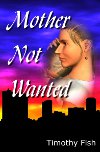
And Thy House
Extra Feature: High Res Image

History of
Cane Creek
Association
by D. F. Magruder
The Issue of Point of View
Written By: Timoth Fish Published: 11/13/2007
I recently got into a discussion about point of view (POV). It seems to be a favorite subject among some people, some people seem to have trouble understanding it and problems with POV may prevent a manuscript from being accepted. There are plenty of people with a lot to say about POV, so rather than try to cover it in detail I want to give my own point of view of point of view.
Three Points of View
You will find many different classifications of points of view, but there are three that most people have accepted as the three points of view. These are first person, second person and third person. Second person is rarely used.
The point of view is that of the person telling the story. In fiction, this is usually not the author but a character within the story. In first person the character is involved in the story. The words I, we, me are used. The narrator can describe his actions and feeling, but he cannot tell us things that he should not know.
In second person the narrator uses the word you to tell the story. For example, he might say You walk into the room and see your mother sitting on the sofa. She smiles at you when you call her by name. It works better with instruction manuals than with novels. It is cumbersome with novels because the narrator is telling the reader something that the reader should know.
Third person is removed from the main character. The pronouns he, she, they, it are used frequently. The narrator is usually not part of the story and when he is he does not refer to himself as I.
Classification of Third Person
The third person POV is used so frequently that it is often broken down into further classifications. The same terms are not used by all people, but I will refer to these as objective, subjective, limited omniscient and omniscient.
Objective
In the objective point of view, the narrator can only watch what is happening. He can watch as the character frowns or bangs the table with his fist, but he cannot feel what the character feels or think what the character thinks. He tells us what happens, but we may not know if the character is angry or just putting on a show since we cannot get into the characterís head.
With this point of view, the narrator tells the story without passing judgment. The narrator is strictly without emotion and reader is unable to listen to the characterís thoughts.
Subjective
Subjective third person moves the narrator closer to the story. In this POV, the narrator is one of the characters in the story, but he is always referred to in the third person. The story is told through the eyes of this person. The feelings that this person has may be revealed. The things he sees may be reveal. The feelings of others must be ignored and the narrator never sees something that the viewpoint character is unable to see. If, for example, the viewpoint character is a blind man then we can mention what he hears, smells, touches, tastes, but we cannot speak of how he or other look.
Subjective is similar to first person but the author has the freedom to kill the viewpoint character. In first person the character must have a chance to write his story before he dies, but in third person subjective the scene can fade to black when he dies.
Limited Omniscient
With this point of view, the narrator knows a great deal, but his knowledge is limited. He may be able to read the thoughts and feelings of one character. He may be able to see what that character sees. He may be able to observe the scene objectively. He may know the history and the future, but he may be limited in that he does not know what the other characters see, think, feel and know.
Omniscient
In this point of view, the narrator knows everything. He knows the past. He knows the future. He can listen to the thoughts of all of the characters. He can watch the characters from afar. He can do all of this at will.
This point of view is the most distant point of view and lacks the intimacy of the other points of view. It puts the reader much closer to the authorís thoughts than those of the characters.
Appling Classifications to All Points of View
The table below show examples of applying all four of the classifications of the third person POV to the three points of view. Some of these are more effective than others, but as you can see, all four of the sub-classifications can be used for all there points of view. The author most decide what point of view works best.
| Objective | Subjective | Limited Omniscient | Omniscient | |
| First Person | I see myself in a mirror. | The way we normally see ourselves. | I can see myself and everything around me. | I can see the everything. |
| Second Person | You walk to the door. | You feel tired. | You are tired and you will soon fall asleep. | You are unaware that a gunman is in the bushes. |
| Third Person | The dog walked down the slope. | It was the smell of food. The dog would have it, even if he had to fight the cat for it. | The dog wanted the food.† He went through the fence.† He did not see the cat coming his way. | The dog knew it was dangerous.† The cat saw the dog coming and prepare to attack. |
A Better Understanding of Point of View
The classifications make it easier to talk about the POV for a scene, but when I am thinking about the POV of a scene I usually think of it being more like a camera angle. A camera may be pointed at a person, at a general view of the scene or at what one of the people in the scene is looking at. More than that, it can be above, below, to the left or right. It can be any number of places. The same can be said of literary POV.
In first person, the narrator may be telling us about a time that he did something. It is also possible that the narrator is telling us about the time that he watched someone else do something. The narrator may be looking back on the event from a time in the future or he may be talking about it near the time that it occurred. All of these give the narrator a slightly different angle.
In looking for the proper POV for a scene, the author needs to decide what angle makes the story most interesting. If we want to make fun of a character without the reader becoming offended, we may tell it in first person so that the character seems like he is making fun of himself, but we might want to give him some degree of omniscience in telling his story because we need to be able to tell the reader about some things that the character could not observe. If we want to tell the story of someone who has accomplished something great then we may tell it in third person because we donít want the character to seem too proud of himself. At the same time, we may follow a more subjective point of view so that the reader gets up close and personal with the character.
Consistency
The biggest problem with POV is the issue of consistency. If a narrator is observing the scene of an accident through the eyes of an ambulance driver then he wonít suddenly see it through the eyes of the accident victim, unless the Omniscient point of view is used. If it becomes established that the Omniscient point of view is being used then the narrator cannot suddenly not know enough to tell the reader what is going on.
I like to think of the narrator as a character in the scene or a cameraman with a magic camera. There are some things that the narrator can do, such as walked through closed doors, fly without wings, etc. A lot of times, my narrator has the ability to understand the thoughts of one character, see what the character sees and at the same time see what is going on directly around him. He can slip into the head of one character and sense his feelings, but he canít slip into the head of the person next to him. Once I know what the narrator can do, it is easier for me to think about what he will be able to see and thus be able to write about.
Changing Points of View
Sometimes we need to change a point of view. A chapter break is the best place to change points of view. Changing the point of view allows us to see the story through the eyes of a different character. We may do this because one character saw one part of the story while another saw another part or we many want to show the same scene through the eyes of a different character. We can use this to show the difference in the way the characters view the world. Whatever reason we have for changing points of view, we need to do it at a place where it does not surprise the reader. A chapter break is the more natural place to do it.
In Conclusion
Threat your narrator like any other character in your story. He has his own way of doing things. He has his own place to stand. He has his own voice. Once you know who he is and how he views the world you need only remain consistent to the character in order to keep your POV consistent with what the readers are expecting.



